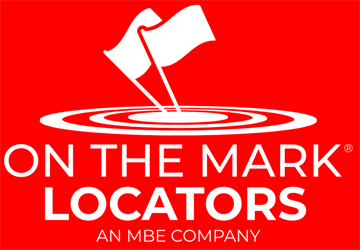Utility lines, such as power lines, telephone lines, and cable television lines, are typically located underground. However, there are some instances in which they are located above ground. In general, above-ground lines are used only in rural areas or in situations where it is not possible to bury the lines. Several factors must be considered when deciding where to locate utility lines. These include the type of terrain, the amount of traffic, the climate, and the proximity to buildings and other structures. To learn more about where utility lines are usually located, read on!
1: Methods of Utility Line Detection
Utility line detection is a process that is used to identify and locate underground and overhead utility lines. This process involves the use of specialized equipment to detect, locate, and mark the lines. Specialized geophysical equipment, can be used to locate and identify utilities. GPR systems employ an electromagnetic wave that is sent beneath the surface of the ground and then is reflected. The reflected wave is analyzed, and any obstructions in the wave can indicate the presence of a utility line. EM systems involve the use of an electric current that is sent below the surface, and the resulting reflection of the current indicates the presence of any metal utility lines. Both of these systems are used to detect the exact location, depth, and type of utility lines.
2: Utility Lines - What Are They?
Utility lines are what we rely on to deliver electricity, gas, phone, internet, water, and other services to our homes and businesses. Utility lines can be either overhead or underground, depending on the needs of the area being serviced. Overhead lines are typically used in rural areas, while underground lines are used in urban and suburban areas. The type of utility line used also depends on the terrain and climate. In areas that are prone to severe weather and high wind speeds, it is important to have underground lines that are safely located below the surface. They are also more aesthetically pleasing than overhead lines and can be less disruptive to the environment.
3: Where are Utility Lines Usually Located?

Most utility lines are installed underground, but there are a few cases in which they are installed above ground. Above-ground lines are typically used in rural areas, or in cases where the terrain is too difficult or cost-prohibitive to bury the lines. In some cases, they are also used to provide service to areas that are near buildings or other structures. When utility lines are installed above ground, they typically follow the edge of roads or run along the sides of buildings. This ensures that the lines are safely away from areas with high traffic and any other potential hazards. The lines are also usually marked and carefully monitored for signs of wear and tear.
4: Things to Keep in Mind When Considering the Location of Utility Lines
When considering where to locate utility lines, several factors must be taken into account. Factors such as the type of terrain, the amount of traffic, the climate, and the proximity of other structures must all be taken into consideration. It is also important to ensure that the lines are installed in a way that is safe and secure. All utility lines must adhere to strict safety regulations to ensure that they are properly grounded and secure. It is also important to make sure that any structures that are located near the lines, such as buildings and trees, are not in danger of being damaged by the lines.
5: How to Locate Utility Lines
Locating utility lines can be a tricky task, and it is important to take the time to ensure that any lines are safely located and marked. A professional service can use specialized equipment systems to accurately locate and identify utility lines. It is also important to keep in mind any local regulations or codes when it comes to locating and installing utility lines.


